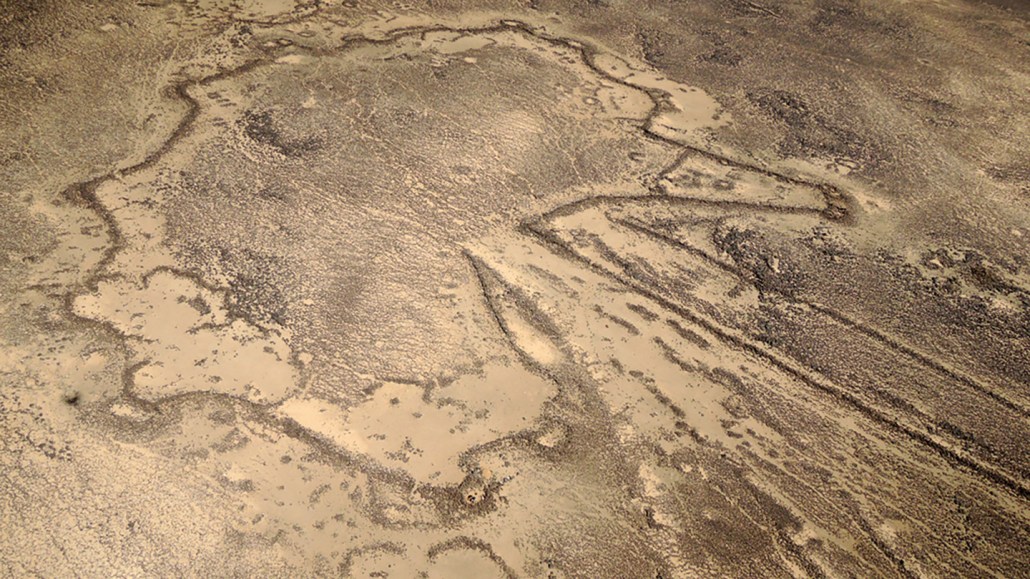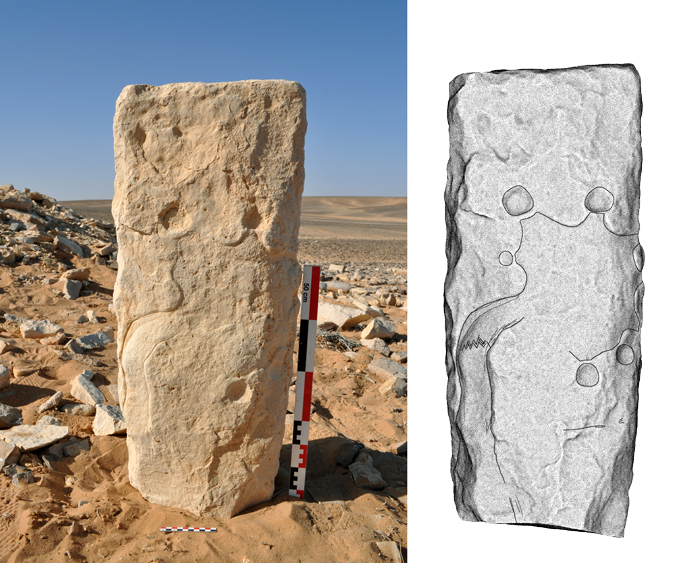The oldest scaled-down drawings of actual structures go back 9,000 years
Rock engravings in the Middle East may be maps or blueprints of massive desert kites

Massive ancient hunting traps called desert kites (one in Jordan shown from above) include long walls that converge on enclosed spaces where animals were driven into pits.
O. Barge, Globalkites Project, CNRS








